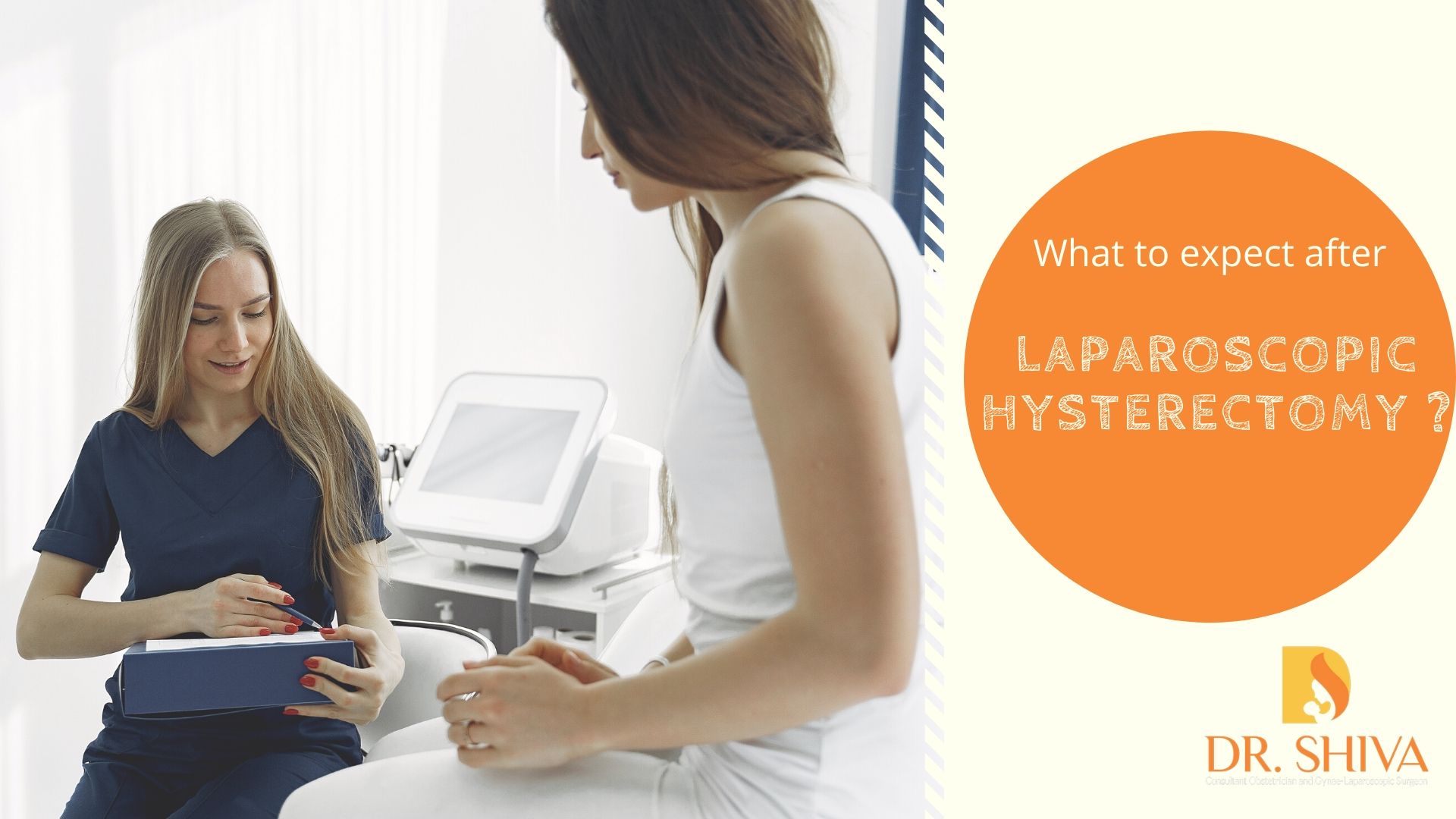
Laparoscopic hysterectomy is a minimal invasive surgical procedure for the removal of the uterus. The laparoscope is inserted through a small incision in the belly button and other specialized instruments are inserted through two or three other tiny incisions in the lower abdomen. This helps the surgeon to have a full view inside and of surrounding organs and have control over incisions. Once the surgery is completed the uterus will be removed via the vagina. The procedure usually takes around 1 to 3 hours and is done under general anesthesia. The patient will be hospitalized maximum for a night for the doctors to keep a check on them and most patients will be able to get back to normal routines within a week.
Some patients remove their ovaries if there is a family history of cancer or if there is an abnormal growth on the ovary. The removal of the ovaries will bring on the menopause or some menopausal symptoms such as hot flushes. If the ovaries are retained, the patient doesn’t need to take hormone tablets. The doctor will explain the advantages and disadvantages of removing or leaving the ovaries before the operation. Women may also opt to keep the cervix or remove them with the uterus. If it is retained, then there is a 5% chance of monthly spotting during the time of menstrual periods. If the woman does not want to menstruate or has a family history of cancer the whole uterus has to be removed and chances for pain reduction are better if the cervix is removed.
What are the advantages or potential benefits of a laparoscopic hysterectomy surgery?
- Considerably less pain post-surgery.
- Minimum blood loss.
- Fewer complications
- Less scarring, as it requires only a few small incisions
- The stay at the hospital is shorter
- Faster return to normal day to day activities
- There is a decreased risk of infection
- Recovery period is 1-2 weeks, as compared to 4-6 weeks after an abdominal hysterectomy.
What to expect before the surgery?
Patients will have to avoid food on the night before surgery. Prior to the day of surgery, there will be physical examinations and blood tests taken.
What are the risks or potential complications of laparoscopic hysterectomy (LH)?
The chances of all the risks mentioned here are of a very small percentage:
- There is a very small chance of infection
- Blood clots may occur in the legs or lungs but chances are less than 1 in 250 women.
- Bleeding, but it is very uncommon during hysterectomy.
- There may be a risk of internal injury to bladder, ureters, bowel or blood vessels but it is less than 1 in 100 surgeries.
- Chance to convert to an open surgery but only if it is technically impossible to complete the LH or if a complication comes up.
What is the kind of recovery we can expect and how to take care of yourself at home after the surgery?
- Do not stay in bed for long and instead be active. Walking is good. Resume activities as soon as you feel okay. But do not lift anything heavy or quickly for a few days.
- You may shower 2 days after the surgery but do not take a bath for the first 2 weeks to enable the wounds inside to heal without getting wet.
- The stitches made during surgery will usually dissolve 10-14 days after your operation. Wash the area only with warm water and pat it dry. Never use alcohol on it.
- There may be slight vaginal bleeding for a few days. You may use sanitary pads but avoid tampons and do not douche.
- Avoid sex for a few weeks after your operation to enable the internal wounds to heal sufficiently.
- After the surgery, there will be a catheter (the tube that empties your bladder), which will be removed later most probably by midnight.
- Avoid driving for a few days after the surgery.
- Diet: You will be able to have a normal diet within few hours of surgery but if you have an upset stomach follow a low fat diet. To prevent constipation increase fiber intake and drink lots of food.
- Medicines: Painkillers will be provided postoperatively at the hospital as well you may have paracetamol at home but must follow the dosage as mentioned. Strictly take the medicines and complete the course as prescribed by the doctors. If you were on blood thinners before the surgery do check with the doctor when to restart taking those meds.
You will need to contact the doctor if the following conditions continue to persist after the surgery
- Bleeding continues for more than 10 days.
- There is a foul-smelling discharge.
Laparoscopic hysterectomy may not be possible or appropriate for every patient, for example, if the uterus is bigger than 6-7 months pregnancy or if the patient has had multiple previous operations in her lower abdomen. Do discuss all the options and risks and benefits before the surgery.
Contact us to know more on laparoscopic hysterectomy.

Recent Comments